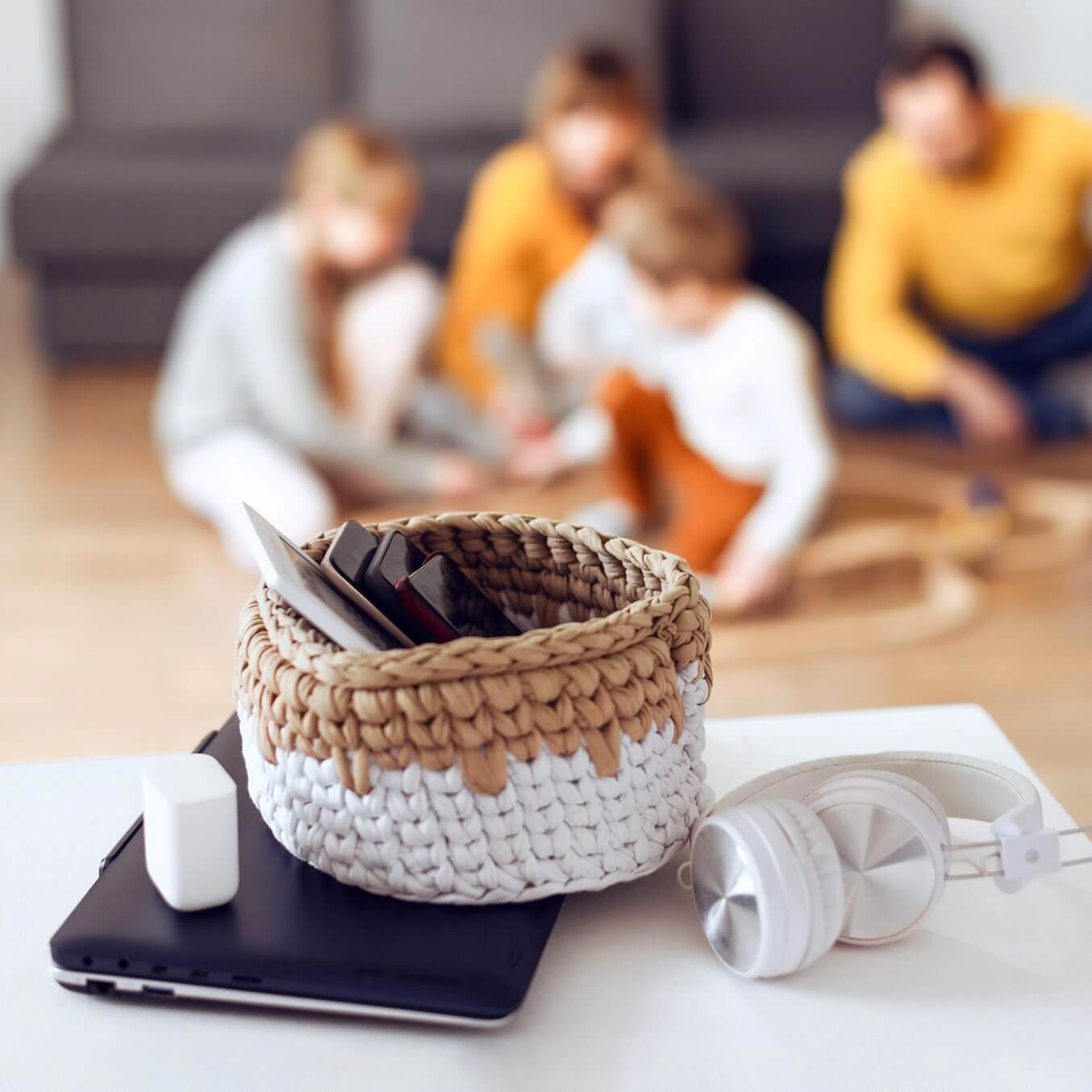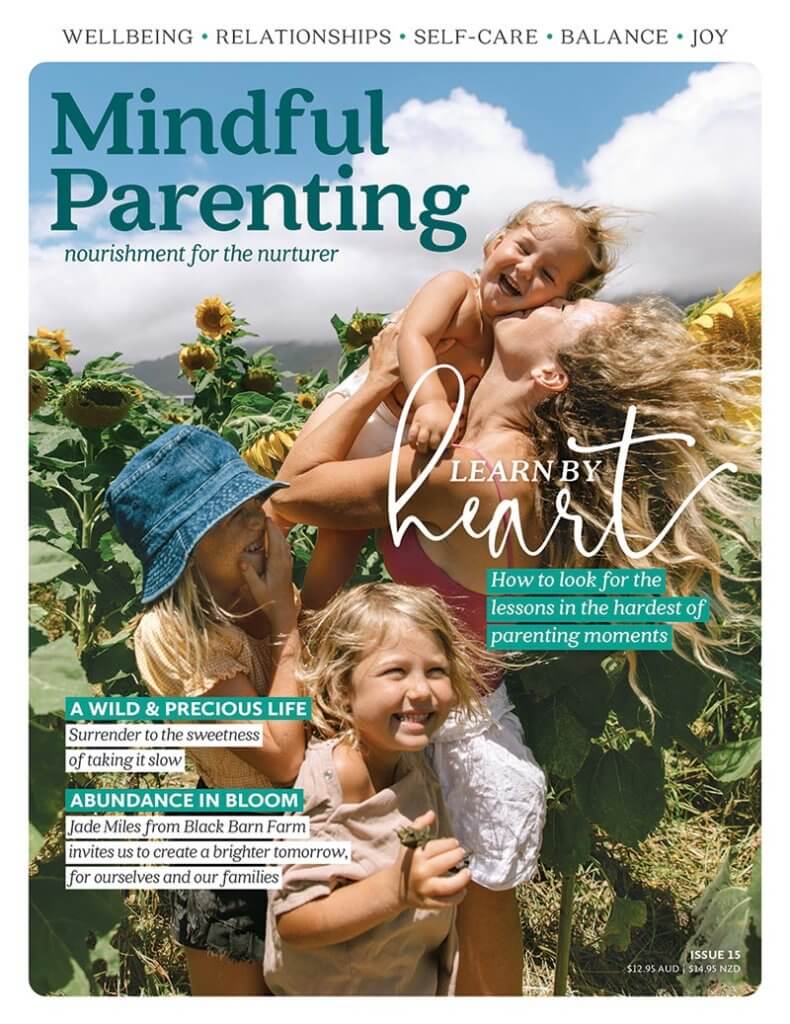
We know that screen time should be limited for children, but our own time online could be impacting them more than we realise.
I don’t really like my phone. I never really have, to be honest. I ditch it on walks, am notoriously bad at replying to well wishes on social media, and I loathe the adrenal tug that accompanies every ring and beep to stop what I am doing to launch for the flashy device. Sure, it’s made life admin more efficient, kept me connected to loved ones around Australia and the globe, and helped me navigate how to get to and from one destination to the next. But I would argue that access to the world at my very fingertips hasn’t enriched the quality of my life. In some ways, it has robbed me of what I value most: time in the now.
It was Mary Oliver, the late poet who found sincere wonderment in nature, who said: “Attention is the beginning of devotion.” Each time I read this quote, I find myself repeating Oliver’s words, as if by saying them again and again I can somehow imprint the richness of their meaning deep into my cells. We know this to be true – that our attention is our most powerful form of human currency, connecting us to everyone and everything – yet in this digital age, more often than not, we are trading our most precious resource for time on our screens.
The reality though is that we live in a popular-media hubbub and there’s no avoiding or escaping it (hats off to those who try!). It was only 15 years ago, in 2007, that the first iPhone was unveiled, which was the same year Netflix introduced streaming services. The iPad saw its 10th birthday in 2020, and while television and video games have been around for decades, they have never been so portable or easily accessed. Scientific debate over the impact of screen time has followed the introduction of every new device. It’s said that unhealthy exposure and use of screens has been linked to attention problems and social interaction difficulties, but in the technological wilderness of our times, psychologists and other child development experts are taking a deeper, longitudinal, and increasingly nuanced look at children’s and teens’ use of tablets, phones, and other screen-based devices. They want to understand the long-term impacts – both the benefits and the drawbacks. They are paying closer attention to the type of content kids are consuming and the environment that surrounds screen time, including parenting style and socioeconomic status.
The World Health Organization (WHO) and the American Academy of Pediatrics (AAP) have stepped in with recommendations. They call for no screen time at all for children until 18 to 24 months, except for video chatting, and say kids aged two to five should get less than an hour of screen time per day. The AAP also developed a Family Media Use Plan for older kids, in which parents and children negotiate limits and boundaries around screen usage.
Less spoken about however, and what concerns me most, is the influence of adults’ screen time on the developing habits and behaviours of our children. We know our little ones are learning about the world around them with their eyes fixated on us, but if our attention is elsewhere – looking at a screen – what message is that sending to our growing and impressionable children?
Two decades ago, technology expert Linda Stone coined the phrase ‘continuous partial attention’ to describe our practice of dividing our attention, and it’s never been more true or relevant than now. This condition is harming not just us, Stone argues, it is harming our children. Compared to the 1960s, parents today spend more time caring for their children, but emerging research shows engagement is increasingly low quality. While parents might be in their children lives more physically, they are less emotionally attuned, and this is the major concern. It has less to do with screen-obsessed children and teens and more to do with tuned-out and emotionally unavailable parents – and this chronic one-foot-in approach is negatively impacting the way kids learn essential communication skills.
Clinical psychologist Catherine Steiner-Adair is the author of The Big Disconnect: Protecting Childhood and Family Relationships in the Digital Age. For her book, she interviewed 1,000 children, parents, and teachers about how they felt about the role screens were playing in their lives. “Children of all ages – two, 15, 18, 22 – used the same phrases to talk about how hard it is for them to get their parents’ attention when they need it: sad, angry, mad, frustrated,” Steiner says. They were complaining that their parents were focused on screens. “[It’s a] new sibling rivalry, only it’s not a new member of the family – it’s a new screen, it’s a device.”
There are ways to successfully shepherd our children through the digital revolution and it starts with modelling healthy screen use. The Raising Children Network recommends:
- Switching phones off during meals.
- Turning the TV off when you’ve finished watching a program.
- Balancing screen use with activities like spending time outdoors, reading, and doing physical activity.
- Giving your child your full attention and avoid checking your phone when you’re playing together, talking, or eating.
So let’s stop preening on our Instagram, scrolling our Facebook feeds, and responding to texts and emails as soon as they arrive, and start paying attention to what matters most: our families and their wellbeing – including our own.























